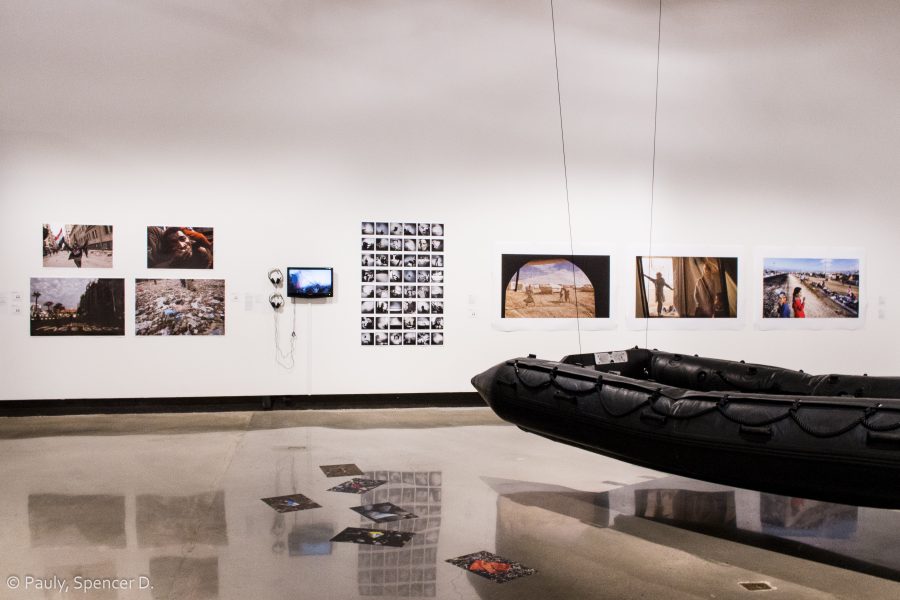The Southeastern Center for Contemporary Art (SECCA) has opened a new exhibit, “Dispatches,” which will be open until Feb. 19, 2017.
The word “dispatches,” first used in 1536, is defined as the sending of someone or something to a destination or purpose and also as a report sent from a journalist abroad.
The exhibit allows visitors to “live news through art.” Through video, photos and letters, the visitor is immersed in expressions of major events that are all too familiar such as ecological justice, borders and migration, post-9/11 realities, social action and the 2016 presidential election.
The Pulitzer Center on Crisis reporting has partnered with SECCA to present various talks and discussions that will be held throughout the duration of the exhibit’s stay.
Ecological justice
This portion of the exhibit showcases our encroachment on the ecosystem and how our industries are now moving into suburban areas as well. One piece of art that beautifully shows this relationship is a piece by artists Susannah Sayler and Edward Morris, cofounders of The Cannery Project. Titled “Water Gold Soil/American River” it follows a single flow of water to investigate the drought in California. Using areal shots and poetry, the piece is a beautiful fusion of journalism and art.
Borders and Migration
The borders and migration section is possibly the most powerful section the exhibit, rivaled by the post-9/11 realities section. Ron Haviv documents the fall of Tripoli in 2011 and the “Arab Spring” that followed. A five-minute video blends artistic style and actual journalistic footage to produce a chilling five minute video. Haviv also has a series of photos on display that show the disillusion and violence in Egypt during the “Arab Spring” when the citizens of Egypt demanded social reform to no avail. Another video uses social media posts to track the movements of refugees from Syria and other Arab countries.
Post-9/11 realities
Post-9/11 realities is another eye-opening display of beautiful modern art with strong messages. This section evaluates issues such as surveillance. One piece in the exhibit, “Blue Sky Days,” is a series of photographs taken by van Thoman Houtryve from his personal drone. Flying the drone directly over weddings, funerals and outdoor yoga in a public park he shows the viewer similar images to what military drone operators would see just moments before they would pull the trigger. It is a truly beautifully intimate display of humanity through a perspective that is usually described as non-intimate and distant when operator are interviewed on the news.
Presidential election
This exhibit on the blending of journalism and art would not be complete without the installation of a piece on the election. Former journalist-turned-artist Sheryl Oring simply used the tools of a journalist — camera, typewriter, pen and interview — to create an installation for free expression. In this particular installment entitled, “I Wish to Say,” Oring asked passersbys on the street to take a moment and sit down to write their thoughts and concerns to Donald Trump, resulting in a wide range of messages.
Social action
As the back of the museum’s brochure tells us, we all have a voice. Visitors can write their responses on a wall regarding the themes tackled by the “Dispatches” exhibit. In addition, the exhibit invites responses to local issues such as House Bill 2. The exhibit also invites everyone to utilize social media the hashtag #SendADispatch.














